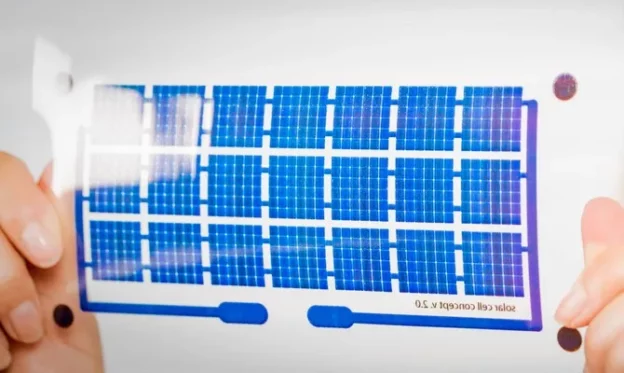The team of researchers at Australia’s Commonwealth Scientific and Industrial Research Organization (CSIRO) has led an international effort that has set a new standard in the efficiency of roll-to-roll printed solar cells.
This innovative technology, characterized by flexible, lightweight solar cells printed on thin plastic films, is poised to greatly expand the practical applications of solar utilization.
The advance of printed solar cells
Contrary to the conventional silicon solar panels defined by their rigidity and weight, the new printed solar cells stand out for their remarkable flexibility and mobility. This technological breakthrough promises to revolutionize the field of solar energy, enabling its use in hitherto unanticipated contexts such as urban architecture, the mining industry, emergency response, disaster relief, space applications, defense and personal electronic devices.
Dr. Anthony Chesman, who heads CSIRO’s renewable energy systems group, highlights this achievement as the fruit of nearly a decade of dedicated research: “These thin, lightweight solar cells, developed by CSIRO, are poised to transcend the laboratory environment and generate clean energy in real-world scenarios… We have overcome a number of technical challenges to achieve these records in large-scale interconnected modules”.
One of the keys to this achievement has been the implementation of the roll-to-roll printing technique, facilitating large-scale manufacturing. “Roll-to-roll printing allows for continuous production runs of plastic, which could significantly increase manufacturing capacity.“says Dr. Chesman. This methodology, already established in the graphics sector, promises seamless integration for Australian producers, anticipating significant economic and environmental benefits for both Australia and the world.
The Organization’s strategy also includes the use of perovskite, an advanced material, and leveraging automation to optimize the process. Dr. Doojin Vak, senior scientist at CSIRO, says, “Perovskites represent an emerging material with great promise because of their ability to be formulated into inks for use in industrial printers.”
Although perovskite solar cells do not yet reach the efficiency or durability of silicon panels, CSIRO envisions a specific niche for its solar printing technology. “Thanks to their light weight, flexibility and portability, our printed solar cells can be easily transported to any place with solar exposure.“Dr. Chesman explains.
CSIRO is currently seeking industry partners to refine and commercialize this pioneering technology. This project involved collaborations with the University of Cambridge, Monash University, the University of Sydney, and the University of New South Wales, whose findings were published in the journal Nature Communications .
This breakthrough in printed solar technology represents a milestone in clean energy production and illustrates the power of international collaboration in science and technology. By bringing together experts from different disciplines and countries, it opens a promising path towards sustainable and affordable energy solutions, marking a step forward in the global commitment to the environment.
Don’t miss any of our posts and follow us on social media!
Inspenet.com YouTube LinkedIn Facebook Instagram
Source: interestingengineering.com
Photo: shutterstock


